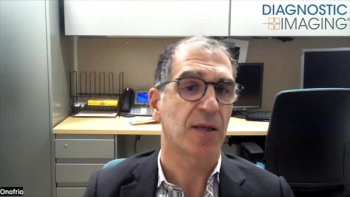
Large, Fluid-Filled Spaces Seen on Brain MRI Could Indicate Future Dementia
Large numbers of perivascular spaces seen in the brain are more commonly found in patients who go on to develop cognitive problems or dementia.
Large fluid-filled spaces around small blood vessels in the brain that can be seen on MRI scans are more likely to appear in patients who go on to develop cognitive problems or dementia, according to a new study.
These spaces, called perivascular spaces, play a role in clearing the brain of waste and toxins. It is also thought that they are involved with aging-associated brain changes. In a study published Jan. 27 in Neurology, a team of investigators from the University of New South Wales in Australia showed that these large spaces are much more common in people who go on to have these types of neurological problems.
“Severe perivascular space disease may be a marker for an increased risk of cognitive decline and dementia,” said Matthew Paradise, M.B.Ch.B., M.Sc, from the Center for Healthy Brain Aging. “More research is needed to understand how these enlarged spaces develop, as they could be an important potential biomarker to help with early diagnosis of dementia.”
Related Content:
Although more work is required, he said, the results from this study show a clear association between the presence of large spaces and these types of neurological problems.
For this study, Paradise’s team administered cognitive tests for thinking and memory skills to 414 participants. In doing so, they assessed these patients, who were an average of 80-years-old, for dementia at the beginning of the study and, then, again, every two years for eight years. They also conducted MRI scans to pinpoint any enlarged perivascular spaces in two key brain areas both at the start of the study and at the same intervals.
Based on their analysis, they identified the top quartile of participants who had the most enlarged perivascular spaces – those with severe cases – and compared their scans and scores to patients who had fewer or no enlarged spaces. They discovered patients with the most enlarged spaces in both brain areas analyzed were nearly three times more likely to develop dementia during the study period.
Overall, they diagnosed 97 people – 24 percent of the group – with dementia, and among 31 participants with severe perivascular cases, 12 individuals (39 percent) received the diagnosis. Those patients, Paradise said, were more likely to experience greater decline in their cognitive scores four years later, and these results persisted after his team adjusted for age, high blood pressure, and diabetes, as well as other signs that could be a marker of dementia, such as signs of disease in the brain’s small blood vessels.
“These results suggest that there is an independent mechanism for the perivascular spaces as a biomarker of cognitive impairment and dementia apart from being a general marker of disease in the small vessels,” he said. “For example, enlarged perivascular spaces may be a biomarkers of impaired waste clearance in the brain.”
For more coverage based on industry expert insights and research, subscribe to the Diagnostic Imaging e-Newsletter
Newsletter
Stay at the forefront of radiology with the Diagnostic Imaging newsletter, delivering the latest news, clinical insights, and imaging advancements for today’s radiologists.




























